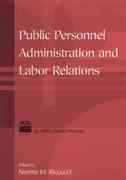Hello I need explanation please for better reference
Question 6 Consider a two-sector economy. Output has settled in equilibrium at the level where the injections line, J, intersects the withdrawals line, W. Which of the following statements is false? O a) An increase in autonomous consumption will shift W downwards. ( b) An increase in induced consumption would make the W line flatter. c) An increase in injections will shift the J line upwards. ( d) If either line shifts upwards, the equilibrium level of output will increase. Question 7 In a four-sector economy, which of the following is assumed always to increase when GDP increases? Obj G O O) M O d) X Question 8 In a four-sector economy, which of the following would not cause a change in MPE,? a) An increase in exports. b) An increase in the fraction of their income which people spend on imports. c) An increase in tax rates. O d) An increase in thriftiness by households. Question 9 Suppose the government increases the tax on tobacco products, and suppose the demand for these products is inelastic. How should this be analyzed on the multiplier model? Which of the following statements is true? a) The planned expenditure line will shift upwards, because people will pay more in the shops on tobacco products. b) The planned expenditure line will shift downwards, because people will buy fewer cigarettes, so their spending on tobacco after allowing for the tax will be lower. c) The withdrawals line will end up shifting downwards, because the rise in the tax will cause people to save less. d) The injections line will shift downwards, because this includes all government spending net of taxes. Question 10 Which of the following statements about multipliers is false? ( a) The multiplier in a four-sector economy equals 1/(1-MPEy). b) The multiplier in a four sector economy equals 1/(MPSy). O c) The size of the multiplier increases if the W line becomes flatter. Od) The balanced budget multiplier means that if the government increases its taxes and purchases by the same amount, output might still increase.Which of the following must always be equal? ()a) Actual saving and actual investment in a two-sector economy () b) Planned saving and planned investment in a two-sector economy c) Actual saving and actual investment in a four-sector economy ( d) Planned saving and planned investment in a four-sector economy Question 2 Which of the following statements is correct in the case of a four-sector economy? ( a) G equals all planned government spending. ( b) / equals planned spending on new capital goods. c) T equals all planned receipts from taxes. O d) C is less than disposable income minus planned saving. Question 3 Suppose that one month, injections in a four-sector economy are greater than withdrawals. Which of the following statements is false? ( a) Planned spending will be greater than output. () b) Actual investment will be less than planned investment. ( c) Planned investment must exceed planned saving. O d) Output is likely to be increased. Question 4 Suppose we draw the consumption function for a two-sector economy, with disposable income, Yous. on the horizontal axis and planned consumption, C, on the vertical axis. Suppose we also add a 45" line through the origin, and find that the consumption function intersects this at a Yous equal to $1,000 billion a year. Which of the following statements is false? ()a) The slope of the consumption function at any level of Yous shows the value of MPCDis at that level of Yors- O b) If Yous in the economy was $1,000 billion a year, planned consumer spending would also equal $1,000 billion a year. ()() If Yous in the economy was less than $1,000 billion a year, planned saving would be negative. (d) The consumption function must be a straight line. Question 5 Which of the following factors might cause a country's consumption function to shift upwards? a) A fall in share prices. ( b) A fall in interest rates. c) Expectations that the economy will soon go into a recession








